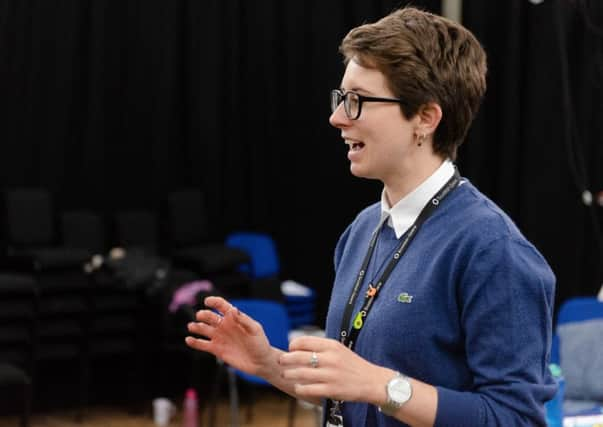Scottish Opera lets real world events inform tragedy of Iris


In a similar deception, an innocent Japanese girl is trafficked from her slum home by an odious playboy and a brothel keeper from Tokyo’s infamous Yoshiwara district. She, too, is held captive, but refuses to comply with her kidnappers’ demands. One wants her “disposed of,” the other sees profit in selling her on. Neither gets their way. In a tragic act of desperation the girl takes her own life. Her corpse is discovered in a stinking sewer.
The first of these stories is absolute fact, taken from newspaper accounts earlier this month following the High Court sentencing of a four-man sex trafficking gang convicted of operating in Glasgow’s Govanhill district. The other is the hard-hitting storyline to Pietro Mascagni’s 1898 opera Iris, which Scottish Opera is performing in semi-staged concert format next Sunday at the City Halls in Glasgow.
Advertisement
Hide AdAdvertisement
Hide AdThe coincidence has both troubled and inspired Scottish Opera staff producer Roxana Haines, who is directing this part-staging, and who already knew Iris from assisting on a recent fully-staged production for Opera Holland Park, where the music director was, and is again, Scottish Opera’s Stuart Stratford.
“After what happened in Glasgow, we sat down as a company and I said ‘I think we need to recognise this in some way,’” she explains. “I really don’t want to force the connection upon a Sunday audience who think they’re coming for a joyful afternoon, but I’m sure we’re doing the right thing in acknowledging the reality of the situation.”
In a sense, so were Mascagni and his librettist Luigi Illica (more famous for his subsequent hit collaboration with Puccini in Madame Butterfly) when they contrived to set a storyline that, on the one hand, satisfied the growing hunger among fin de siècle audiences for all things oriental, while on the other, may have shocked their original audiences with a realisation that the sex trade, albeit “normalised” under the Geisha tradition, was still a feature of Japanese life.
“I’ve been knee deep in reading about sex-trafficking and the Yoshiwara [red light] district and how there’s still that kind of world there,” says Haines. “If you look at the role of the Geisha, how that differs from the courtesan, and ask yourself what would Iris’s life have been like if she hadn’t been abducted, the reality is she would probably have ended up in the Yoshiwara anyway. So many woman were sold into that life by their parents.”
There’s a danger, of course, on reading too much reality into something the composer and librettist were careful to couch in symbolism. While Iris never achieved the same success for Mascagni as his one-hit wonder Cavalleria Rusticana, it nonetheless features some glorious music rooted in universal expression, like the epic Hymn to the Sun, which declares in the most effusive build up: ‘I am Life! I am infinite Beauty, Light and Warmth! I am Love.’
“Yes, this is a kind of stylised world, and we know that because the key male protagonists – Kyoto and Osaka – are named after Japanese cities. But there’s no getting away from what is a very difficult narrative,” says Haines. “At the heart of it you have a young girl who’s going through very difficult experiences. No-one is suggesting these are a good thing, and we’re not condoning child sex-trafficking. The only way to honour that is by telling it as it is.”
Haines is limited in the physical space she has to work with, a performance area of one metre by eight. “What we do won’t be flashy,” she reveals. “I’ve managed to wangle some costumes and props, but the emphasis has to be on the narrative.”
Advertisement
Hide AdAdvertisement
Hide AdThe emphasis will also be on the central character of Iris, being sung by Australian bel canto soprano Helena Dix. “She has underlying strength,” Haines insists. “Just like so many women across the world who might have endured similar experiences to Iris in reality.”
Will next week’s audience be shocked with what they see and hear?
“It’s not like Mascagni and Illica were teaching us a lesson,” she says. “It’s more that we’re forced to see the reality that’s here. I think that is what is important. I’m not going to work around that softly. I owe it to Mascagni to do that.” Ken Walton
Scottish Opera performs Mascagni’s Iris at the City Halls, Glasgow, on 1 December, www.scottishopera,org.uk